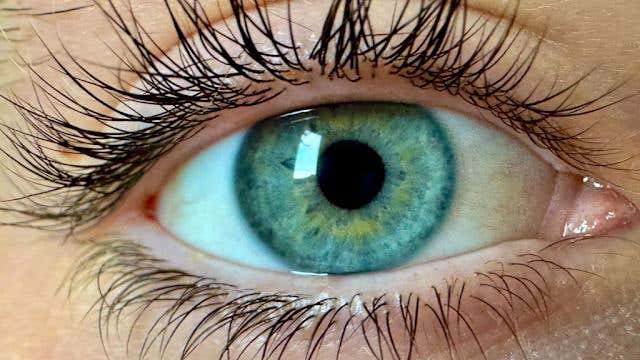Scientists discover why some people develop ADHD
Contrary to negative perceptions often linked with ADHD, this research implies that these ADHD could have been evolutionarily advantageous

ADHD manifests as inattention, hyperactivity, impulsivity, and difficulty focusing, and it can greatly influence a person's academic and social functioning. (CREDIT: Creative Commons)
A recent study, published in the Proceedings of the Royal Society B, suggests that traits commonly associated with attention-deficit/hyperactivity disorder (ADHD), such as impulsivity and distractibility, might offer individuals an advantage in certain situations, particularly in tasks related to foraging.
Contrary to negative perceptions often linked with ADHD, this research implies that these traits could have been evolutionarily advantageous.
The study, conducted by researchers from the University of Pennsylvania, utilized an online berry-picking game to simulate foraging scenarios. Participants, totaling 457 individuals, were instructed to gather as many berries as possible within a time limit.
They faced decisions on whether to continue harvesting from the same bushes, which depleted over time, or to explore other bushes at the expense of precious time.
Related Stories:
Following the game, participants completed an online screening for ADHD symptoms.
Results indicated that individuals exhibiting ADHD-like behaviors tended to move between berry patches more frequently and ultimately collected more berries overall.
These findings suggest that such traits might confer an advantage in foraging environments, where constant exploration and adaptability are key.
Annie Swanepoel, a child and adolescent psychiatrist specializing in neurodivergent conditions, emphasized the evolutionary perspective of ADHD. She suggested that ADHD traits, often viewed negatively in modern societies, might have been beneficial in ancestral environments where risk-taking and high energy levels were advantageous.
Annie Swanepoel, a child and adolescent psychiatrist specializing in neurodivergent conditions. (CREDIT: Twitter/@henrypoconnell)
Swanepoel emphasized the importance of considering the compatibility between individuals and their environments, noting that what may be perceived as weaknesses in contemporary settings could have been strengths in the past.
The study, however, had its limitations. While it compared participants with varying levels of ADHD-like traits, there was no clinical assessment of ADHD, and the sample primarily consisted of self-reported data. Additionally, the virtual foraging task may not perfectly reflect real-life foraging behaviors. Despite these constraints, the study highlights the potential benefits of reframing ADHD traits within an evolutionary context.
Virtual patch foraging task. Participants began each trial by moving their mouse cursor over an intertrial interval (ITI) box. After 1 s delay, the ITI box turned green. Participants next decided to stay at a given patch and gather points ('exploit' decision) or to replenish the patch in exchange for a travel time delay ('explore' decision). Travel times were either 1 s or 5 s, in blocks. Inset: screenshots of the two foraging environments, with 1 s travel times on the left and 5 s on the right. (CREDIT: Proceedings of the Royal Society B)
The discussion extends beyond ADHD, touching on broader implications for understanding neurodivergent conditions in modern society. Graham Music, a child and adolescent psychotherapist, emphasized the importance of considering the environment in which individuals with neurodivergent traits thrive. He suggested that rather than viewing ADHD as a problem to be solved, it may be more productive to identify environments in which individuals can flourish.
For years, ADHD has been linked to modern environments characterized by excessive stimulation, with concerns raised about the impact of technologies like the internet on exacerbating symptoms. Swanepoel highlighted the disparity between modern societal expectations and the attributes associated with ADHD, emphasizing the mismatch between contemporary lifestyles and those of our ancestors, who lived as hunter-gatherers for the majority of human history.
Participants' patch residence time and reward rate on leaving a patch as a function of patch number in session, concatenated across blocks for 1 s and 5 s travel times separately. (CREDIT: Proceedings of the Royal Society B)
By reframing ADHD within an evolutionary framework and considering the role of environmental factors, the study prompts a broader discussion on how society understands and accommodates neurodiversity.
Rather than viewing ADHD solely as a disorder, the findings encourage a more nuanced approach that considers the compatibility between individuals and their environments, with potential implications for education, healthcare, and societal structures.
Adult ADHD symptoms may include:
Impulsiveness
Disorganization and problems prioritizing
Poor time management skills
Problems focusing on a task
Trouble multitasking
Excessive activity or restlessness
Poor planning
Low frustration tolerance
Frequent mood swings
Problems following through and completing tasks
Hot temper
Trouble coping with stress
What's typical behavior and what's ADHD?
Further from the Mayo Clinic, almost everyone has some symptoms similar to ADHD at some point in their lives. If your difficulties are recent or occurred only occasionally in the past, you probably don't have ADHD.
ADHD is diagnosed only when symptoms are severe enough to cause ongoing problems in more than one area of your life. These persistent and disruptive symptoms can be traced back to early childhood.
Diagnosis of ADHD in adults can be difficult because certain ADHD symptoms are similar to those caused by other conditions, such as anxiety or mood disorders. And many adults with ADHD also have at least one other mental health condition, such as depression or anxiety.
For more science and technology stories check out our New Discoveries section at The Brighter Side of News.
Note: Materials provided above by The Brighter Side of News. Content may be edited for style and length.
Like these kind of feel good stories? Get the Brighter Side of News' newsletter.
Joshua Shavit
Science & Technology Writer | AI and Robotics Reporter
Joshua Shavit is a Los Angeles-based science and technology writer with a passion for exploring the breakthroughs shaping the future. As a contributor to The Brighter Side of News, he focuses on positive and transformative advancements in AI, technology, physics, engineering, robotics and space science. Joshua is currently working towards a Bachelor of Science in Business Administration at the University of California, Berkeley. He combines his academic background with a talent for storytelling, making complex scientific discoveries engaging and accessible. His work highlights the innovators behind the ideas, bringing readers closer to the people driving progress.



